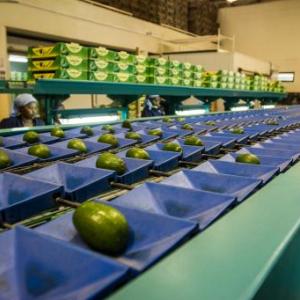Policies for Women’s Profitable Participation in Agricultural Market Systems
Image

This post was authored by Cristina Manfre of Cultural Practice with input from Fintrac Inc. through the Feed the Future Enabling Environment for Food Security project and is the final post of a series exploring the range of policies that can support women's profitable participation in agricultural market systems. Readers are encouraged to access the first, second, third, and fourth blog posts as well as the technical note.
We know the important role that policies play in addressing the legal, institutional, and market constraints that agricultural market actors face. Teasing out how these laws and regulations affect women agri-entrepreneurs and wage workers can be more complicated, however. Without understanding these pathways and impacts, it can be difficult to align program strategies or policies effectively towards the inclusive, competitive market transformations that Feed the Future and other actors are working towards.
Through the Feed the Future Enabling Environment for Food Security project, USAID’s Bureau for Food Security recently commissioned a new technical note titled “Increasing Women’s Profitable Participation in Market Systems” with an accompanying blog series to explore these issues and outline the range of policies that can support women’s participation, performance, and benefits as agri-entrepreneurs and agricultural wage workers.
Important findings were brought to light. As this blog highlights, women’s participation in agriculture has often focused on the production side rather than the wider roles and functions they engage — a result of how women participate in agricultural market systems and the lack of sex-disaggregated data. Over the past several years, research about women in agriculture and women’s (mostly non-agricultural) entrepreneurship is providing new insights into how the enabling environment can support women’s profitable participation in agriculture. A recent report on women’s wage employment and regulatory barriers is a great example of this issue.
Below, we bring together findings from the recent technical note and accompanying blogs to deepen knowledge and awareness on these important issues.
Policies to Support Participation
Women’s participation in agricultural market systems is defined by the set of assets they use or control. For example, if a woman has access to land, then she is able to enter the market system as a producer. If not, she must consider what other assets, including skills, she can use to participate, entering as another type of agri-entrepreneur or wage worker.
Property rights, inheritance regimes and practices, and other policies that shape women’s access to land, property, and credit play an important role in determining how women and men become productive actors in agricultural value chains. Labor laws determine who can work, where, for how much, and for how long. Unfortunately, 104 countries still have laws in place that restrict women’s participation in the economy (World Bank 2018). These include restrictions about where women can work (for example, in Bangladesh, it is illegal for women to work underwater) to the types of tools and technologies they can operate (in Vietnam, a ruling in 2013 banned women from driving tractors of 50 horsepower or more).
According to the World Bank's "Women, Business, and the Law" report (2018), legal barriers that decrease women’s labor force participation have significant economic consequences, undermining gross domestic product growth. The data show that, overall, when there is less gender equality in a country’s legal system, fewer women work or own businesses (World Bank Group 2018: 7, Figure 1.4).
Policies to Support Performance
Women’s ability to improve or maintain their position in agricultural value chains, like men, is shaped by their ability to increase their productivity. Policies that enable women to upgrade their skills, to join associations and cooperatives, expand their access to markets, and enhance the terms and conditions of their work all contribute to strengthening their performance and upgrading their positions in the chain.
Complementary policies, like those that direct investment for infrastructure upgrades, can enable women agri-entrepreneurs and wage workers to perform their household activities in less time and have been shown to increase women’s participation in the labor market. In South Africa, for example, rural electrification increased women’s labor market participation by 9.5 percentage points, compared to only 3.5 points for men. The electrification enabled women to switch from fuel and firewood collection to electric cooking and lighting, enabling more time for income-generating activities to take place in the home (cited in Buvinic 2013). In addition to the discussion of what policies can improve the performance of women agri-entrepreneurs and wage workers in the technical note, this blog describes recent legislative reforms in the United States and Feed the Future countries that have the potential to support women.
Policies to Support Women’s Access to Benefits
When we talk about policies that support women’s access to the benefits, we are referring to policies that support men’s and women’s abilities to access and control income, assets, or other facets of well-being derived from value chain participation, including those that ensure non-discrimination and transparent employment processes.
The existence and implementation of policies that provide workplace safety and protection from gender-based violence are also critical. Many women live and work in violent environments that reduce their ability to derive positive benefits from their economic participation. Women wage workers in particular experience violence and harassment, an issue explored in this post. Digital identity policies that protect women’s rights to income and earnings and other infrastructure that facilitates reductions in labor and transport time are becoming increasingly important.
Although policies are critical to these efforts, we also recognize that they can be insufficient. Weak and underfunded governments in particular face difficulties in being able to set laws and policies to address market constraints, equity, and the protection and safety of workers. This is where private sector initiatives can step in. Dating back to the 1990s, these initiatives have largely focused on wage workers, leaving a gap that agricultural market actors are only recently beginning to fill through sustainability standards. This post offers a closer look at the issue.
So, what does an enabling environment that supports women’s profitable participation in agriculture look like? Among other characteristics, it is an environment that:
- Prioritizes the collection and analysis of sex-disaggregated data to monitor, track, and evaluate the gains and losses men and women experience as policy reforms occurs.
- Eliminates discriminatory labor laws and supports legislation on pay equity and occupational safety and security.
- Improves transport, energy, and water infrastructure to ease the time and labor constraints associated with women’s disproportionate responsibility for household activities.
- Targets women agri-entrepreneurs with services that bundle finance, training and skills development, mentorship, and digital financial services.
- Strengthens laws on non-discrimination and against gender-based violence.
To read the full list of recommendations and the technical note from the Feed the Future Enabling Environment for Food Security, click here.
References
Buvinic, M., R. Furst-Nichols and E. Courey Pryor. 2013. A Roadmap for Promoting Women’s Economic Empowerment. United Nations Foundation and Exxon Mobil Foundation. New York: UNF. http://www.womeneconroadmap.org/roadmap.
World Bank Group. 2018. Women, Business, and the Law. Washington, DC: World Bank. https://wbl.worldbank.org/.


